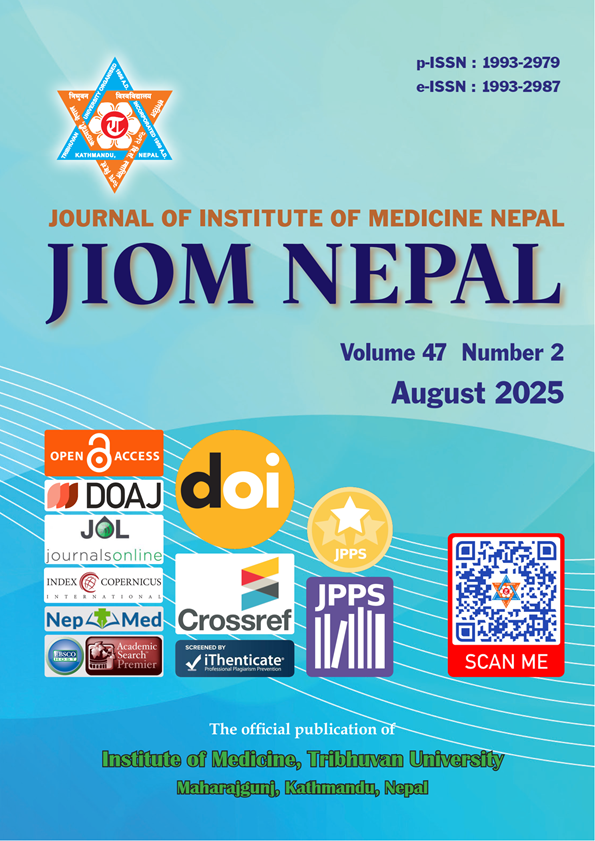Prevalence of Variants of Mandibular Second Premolar in Medical students: A Descriptive Cross-sectional Study
DOI:
https://doi.org/10.59779/jiomnepal.1363Abstract
Introduction
The mandibular premolars have shown diversity in cusp morphology, although they are included under the bicuspid. This has been useful in anthropology and forensic odontology as supporting evidence. This study aimed to determine the prevalence of different types of mandibular second premolars among medical students.
Methods:
A descriptive cross-sectional study was conducted among 255 medical students after obtaining ethical approval. The number of cusps and the groove pattern present on the mandibular second premolar were examined and recorded using a sterile mouth mirror and explorer. The data was entered in a Microsoft Excel sheet and analyzed by the Statistical Package for Social Sciences (SPSS) version 27.0.
Results:
The prevalence of the two-cusp variant 319 (62.5%) was more than the three-cusp variant 191 (37.5%). The most common groove type was H type 198 (38.8%), followed by Y type 191 (37.5%) and U type 121(23.7%). The present study showed that the Y-shaped groove pattern was more common in the right premolar 40% (102), and the H-shaped groove pattern was more common on the left side 42.4% (108). The study showed that two cusp-type premolars are more common on the right and left sides of both genders. This study also revealed that two cusp variants are more common than other variants in different ethnic groups examined on both sides
Conclusions:
The most prevalent variant of the mandibular second premolar was the two-cusps type. H-shaped grooves were most common, followed by Y and U-shaped grooves. H-shaped grooves were more prevalent compared to other types in both males and females.
Published
Issue
Section
License
Copyright (c) 2025 Journal of Institute of Medicine Nepal

This work is licensed under a Creative Commons Attribution-NonCommercial 4.0 International License.















